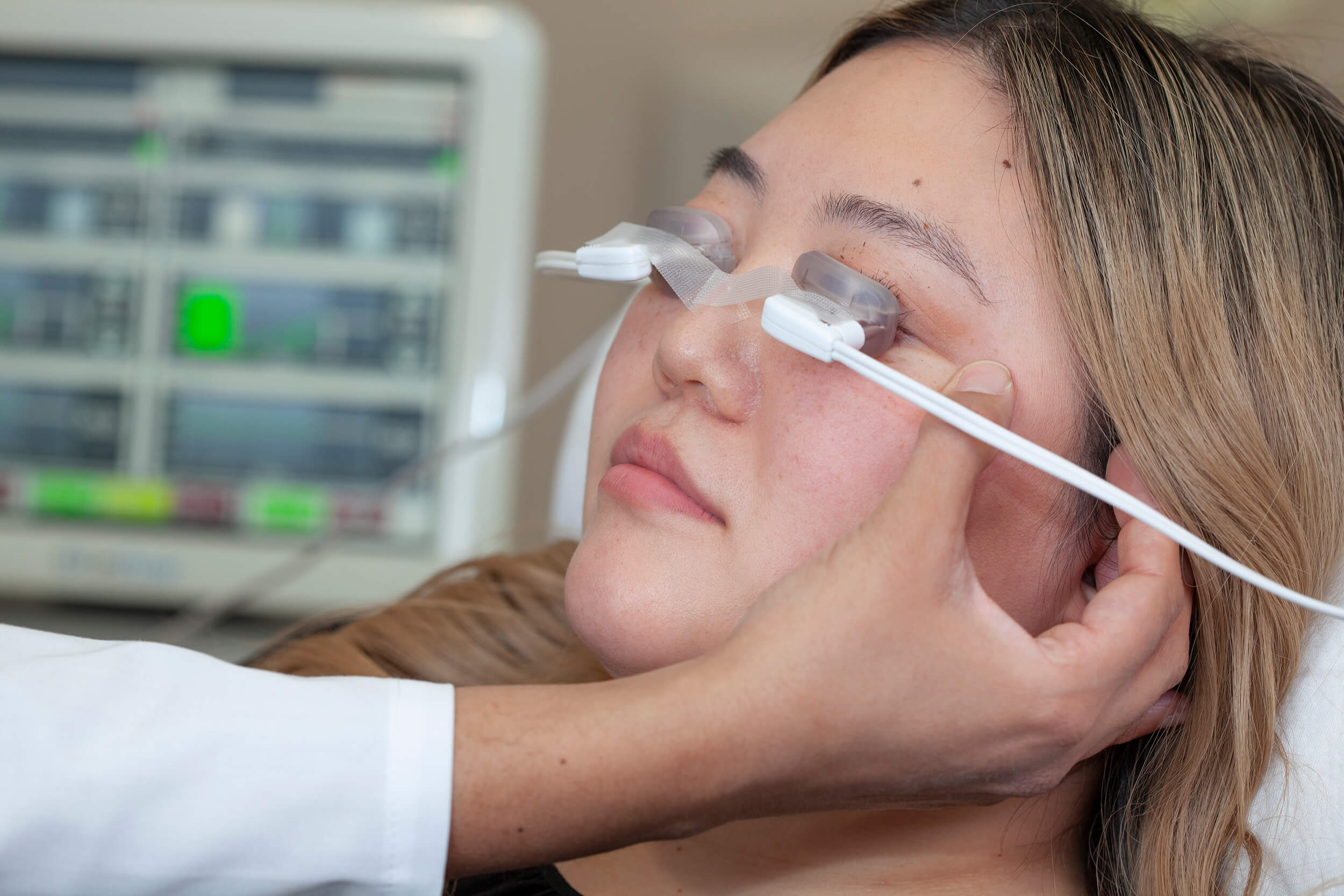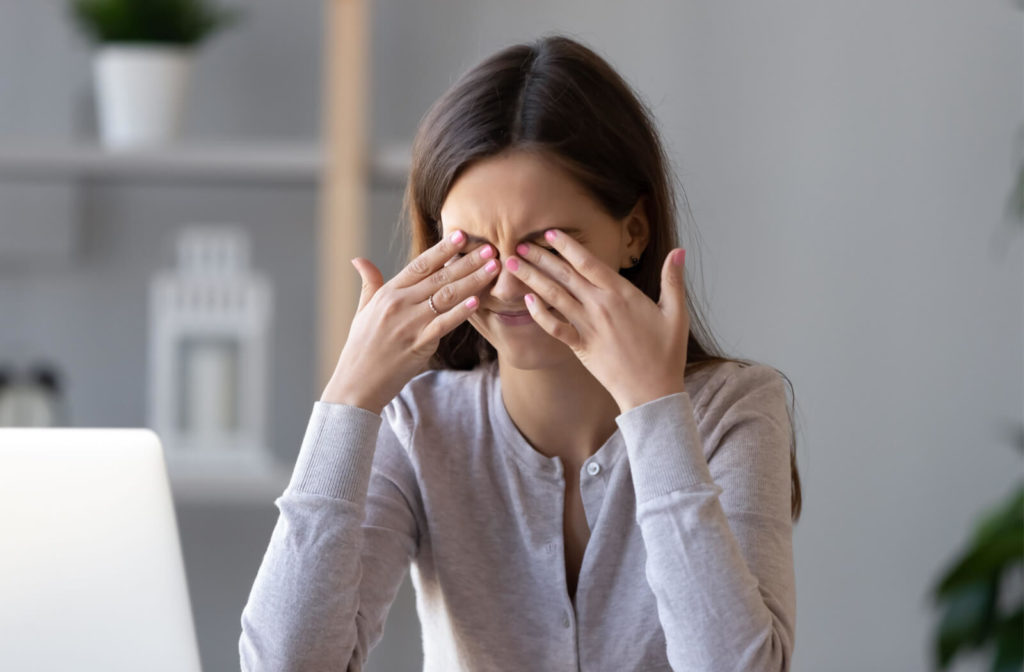If you’re tired of dealing with uncomfortable dry eye symptoms, we may have a solution. Dry eye is characterized by a lack of sufficient lubrication on the surface of the eye, which can cause irritation, redness, and even blurred vision. Fortunately, advances in eye care have resulted in the development of an exciting treatment called LipiFlow.
Lipiflow treats dry eye by melting blockages with heat and massages to promote healthy tear production. With Lipiflow, you can get back to seeing comfortably and enjoying your day.
What is Dry Eye Disease?
Whether it’s a gritty sensation in your eyes or a persistent blurriness, dry eye symptoms can turn your day upside down. This is a common condition, and around 30% of Canadians feel its effects.
Dry eye disease occurs when your eyes don’t produce enough tears or when the tears evaporate too quickly. These are the 2 types of dry eyes: aqueous deficiency dry eyes and evaporative dry eyes. Evaporative dry eye is much more common of these types, accounting for around 85% of all dry eye cases!
Tears are more than water. They’re crucial in lubricating and keeping your eyes healthy. Without enough tears, you may experience symptoms such as:
- A burning or stinging sensation in your eyes
- Sensitivity to light
- Eye redness
- Eye fatigue
- Blurred vision
- Difficulty wearing contact lenses
- Stringy mucus in the eyes
- Watery eyes (ironically enough, this can occur because the eyes are so dry—the body produces more liquid in an attempt to alleviate the dryness)
What Causes Dry Eyes?
Several factors can increase your risk of dry eye disease, including:
- Aging
- Hormonal changes
- Medications such as antihistamines, blood pressure medications, and oral contraceptives
- Medical conditions such as rheumatoid arthritis, Sjogren’s syndrome, and diabetes
- Prolonged screen time
- Exposure to wind, smoke, and dry air
Meibomian Gland Dysfunction (MGD)
One of the leading causes of dry eyes, and the cause LipiFlow seeks to treat, is meibomian gland dysfunction.
Meibomian glands are present in the lower and upper eyelids, and they secrete an oily substance known as meibum that forms the tear film’s outer oily layer, preventing your tears from evaporating before they can moisturize your eyes.
MGD affects the functioning of these glands, leading to the blockage and reduction of oil production. When these glands are blocked, they may still try to make oil. This oil can get trapped in the glands, making the blockages worse. Consequently, your eyes become dry, scratchy, and inflamed.
MGD can be worsened by skin conditions such as rosacea or blepharitis, an inflammation of the eyelids. Poor eyelid hygiene and overwearing contact lenses can also be a factor.
Managing MGD
To manage MGD at home, try warm compresses, eyelid massages, and keeping your eyelids clean. Warm compresses can be as simple as a clean towel soaked in warm water. Place the towel over your closed eyes and let it sit for 4–5 minutes. Do this twice a day to help loosen blockages.
Many optometrists recommend lubricating eye drops for quick relief from dry eye symptoms. Also known as artificial tears, they add moisture directly to your eye, and many different brands are available. Ask your optometrist for recommendations and directions on when to use eye drops.
How Does LipiFlow Work?
Any dry eye treatment begins with a comprehensive eye exam. While MGD causes most dry eye cases, it’s not the only possibility. Your optometrist can examine your eyes and measure the health of your tear film. LipiFlow is designed to address dry eye caused by MGD and may have little effect on aqueous deficiency dry eyes.
LipiFlow is a non-invasive treatment that targets the root cause of evaporative dry eye: clogged meibomian glands. The procedure is relatively simple and can be completed within 12 minutes.
LipiFlow uses a device that fits comfortably around your eyelids. It applies controlled heat to the inner eyelid and gentle pressure on the outer eyelid. This combination warms and massages the meibomian glands, helping to unblock them and stimulate the production of oils. The result can be a healthier tear film and more comfortable eyes.
Benefits of Lipiflow
LipiFlow can provide long-lasting relief from dry eye symptoms. Studies have shown that patients who undergo LipiFlow treatment experience improvements in their symptoms for up to a year. Additionally, the procedure is safe and non-invasive, meaning it may avoid the need for surgery.
One common question many patients have is whether or not the treatment is painful. Patients may experience minor discomfort or a sensation of warmth during the treatment, but your optometrist can put in numbing eyedrops during the procedure. In fact, some people find the procedure relaxing.

Bring Comfort Back to Your Vision
Overall, LipiFlow is a safe and effective treatment option for dry eye patients. The procedure is quick and can provide long-lasting relief from irritating symptoms. If you’re struggling with dry eye and are looking for a solution, talk to our knowledgeable team at Bayside Eye Care about LipiFlow.
Book your consultation today, and let’s help you enjoy clear vision and comfortable eyes once again.



